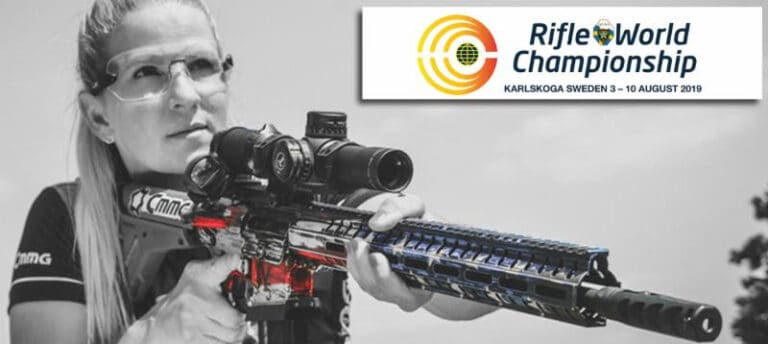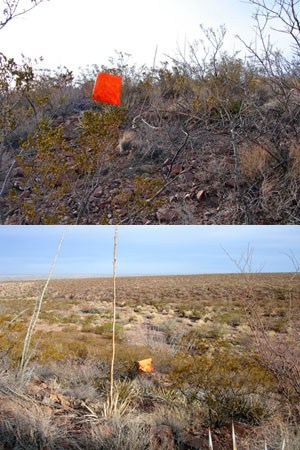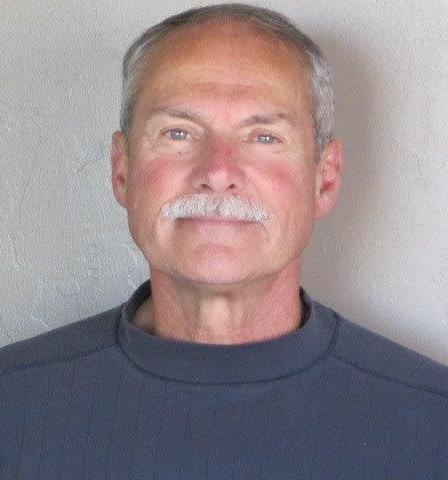TAG Precision—American-made RMR Plate for Kimber
For users of optics-ready Kimber 1911 and 2K11 pistols, TAG Precision has announced…
For users of optics-ready Kimber 1911 and 2K11 pistols, TAG Precision has announced…
Fountain Valley, CA—SureFire, LLC, manufacturer of the world’s finest—and most innovative—illumination tools and…
Shinenyx—creators of a cutting-edge fusion of digital night vision and thermal imaging technology—has…
The Mod-Navy Qual I’ve been doing this qual (or drill, or whatever the current nom…
• Built for road trips and off-road use• Manual transmission equipped• Wrapped in MultiCam Arctic…
I designed the Button Man to give shooters a low-round-count, low-light-engagement drill that involved both…
Chris Tran interviews co-founder Ferdinand Sy to learn about FERFRANS and the MBM/CRD System.
The brand name FERFRANS evokes images of professional-grade short barreled CQB/CQC rifles used by military units in various countries around the world. Created in 1990 by brothers Ferdinand and Francis Sy, the FERFRANS flagship is the Special Operations Assault Rifle (SOAR) which is configured in a multitude of barrel lengths and in a Direct Impingement as well as Piston configuration.
Notably, FERFRANS also developed an independent sear disconnector for its select-fire rifles that reduced the cyclic rate of automatic fire by approximately 200-250 rounds per minute, allowing for a sustainably controllable full-auto platform.
FERFRANS developed an effective muzzle brake for its short-barreled rifles designated as the MBM (Muzzle Brake Mount) that works in conjunction with a quick-mount device called the CRD (Concussion Reduction Device). The MBM is standard on the SOAR platform and is designed, as are all muzzle brakes, to greatly reduce recoil and aid in fast target re-acquisition by venting corked gases within the barrel through the brake.
Anyone that has shot through a muzzle brake will know that depending on manufacturer design, the brake meets with varying levels of efficiency. The partners of that specific operator will also know that standing to the left or right of the shooter that utilizes a muzzle brake can be less than pleasant. This is where the CRD comes in. The CRD mounts and locks to the MBM with a simple twist of the locking sleeve and is designed to direct the laterally-discharged gas from the MBM forward – thus reducing felt concussion to the shooter and to the shooter’s teammates.
To get more insight into FERFRANS, I spoke with co-founder Ferdinand “Ferdie” Sy about FERFRANS and the inception of the MBM/CRD combo. I asked Ferdie about the inception and impetus behind FERFRANS as a company, and he agreed to talk to me about the company and design philosophy.
Author’s Note: Ferdie asked me to rewrite his responses to make them flow better than his writing style afforded. I have paraphrased his responses but have left the content and intent of his responses intact.

CT: What is the backstory behind Ferfrans? How did your company come about, what are its overarching business philosophies, and what does Ferfrans want to bring to the industry?
FS: The concept of FERFRANS started in 1990 in the Philippines. During that time, former military men that lost their power when martial law was removed turn to crime to maintain their corrupt livelihood. They became bank robbers, kidnappers, etc. The incident that solidified my desire to start FERFRANS was when former military-turned-criminals took over the streets with M16s and M203 grenade launchers against security forces armed with only rifles and .38 revolvers. It was apparent that the good guys lacked the firepower they needed to counter this threat. I thought to myself, “How can the Good be defeated by the Bad?” This was unacceptable to me, and prompted me to help the Good. I had been interested in firearms since I was a boy, and this is what really started the idea of FERFRANS. I wanted to give the Good the advantage with better and more accurate firepower to combat the Bad. This is why we have the FERFRANS SOAR.
CT: Regarding the Ferfrans CRD specifically: how did FERFRANS develop this product, and what is its intended need to fill? Is the CRD specifically geared towards military/LE, or is it easily translatable to the civilian market?
FS: We use our own muzzle brake in our firearms; FERFRANS SOAR and SOAR-P. We sell these rifles to LE and Military around the world. I am friends with one of the gunsmiths for a large Southern California Sheriff’s Department, who complained to me that my rifles have so much concussion that it is almost impossible to operate in a CQB environment. The blast and concussion of our muzzle brake had been a concern of FERFRANS for a long time, however this was the first time I had ever received a complaint about it. This was obviously unacceptable to me, so FERFRANS had to do something about it.
The CRD was designed to reduce the concussion to an acceptable level but still maintain all of the positive benefits of a quality muzzle brake. When we designed the CRD, we tried to solve the two functions (concussion reduction and muzzle control) with one product. At first, I just want to use an off the shelf product and include it on my rifles. We tested several muzzle brakes, sound and concussion mitigation options, etc. and none of them worked to our satisfaction. There were plenty of individual options out there that worked for concussion reduction but not recoil management, or devices that worked for recoil management, but not concussion reduction. There was no singular option out there that performed both functions well enough to put on our rifles as an off-the-shelf solution.
We recognized this reality, accepted that there are two separate mitigation functions we needed to address, and that the two functions worked individually. That is why the MBM and CRD are a two piece system. Our MBM works well as a recoil management device, and we then designed the CRD to mitigate felt concussion.
The CRD was originally for the FERFRANS SOAR and SOAR-P because I was concerned with the legality, but it did not violate any ATF ruling on suppressors so we now can sell it to the civilian market. As far as uses, initially it was to answer my friend’s complaint of the concussion in CQB for SWAT use. Since we introduced the CRD, we have interest from officers in helicopters, fast craft, SBSS teams and K9, which I never thought would have a need for the CRD.
CT: If there was one thing you’d want readers to know about FERFRANS as a company, what would it be?
FS: FERFRANS will always listen to what our warriors and law enforcement officers say they need to give them the advantage to fight evil. As far as support on our products, I still believe in the old fashion way of taking care of our customers and if possible, exceed their expectations. I want to treat my customers how I want to be treated, and even more so because I want to earn their business.
When I was first introduced to the FERFRANS system, it was mounted on a carbine with a 16” barrel. I took the carbine to my local outdoor range and ran a few mags through it with standard XM193 ammo. The MBM obviously worked; my shots were flat, felt recoil was pleasant, and I felt as if I was shooting through any other competitive muzzle brake offered on the market today. My companions that day also readily confirmed that the side blast from the brake, like any other brake out there, was significant. I was effectively “that guy.”

I mounted the CRD with ease, and ran through a few more mags. Subjectively speaking, the concussion was definitely reduced for me as a shooter, and my companions also confirmed that the felt concussion while standing to my side was definitely reduced. That being said, it was still loud, and not terribly pleasant to be around, especially while under covered benches at the range.
I concluded at the end of my range day that while the MBM/CDR system definitely worked as advertised, it wasn’t something that I would jump out and purchase immediately… if at all. I dismissed it as a good device, but the concussion mitigation didn’t justify the price tag.
I was wrong.
Flash forward about 4 months, and I built my first AR pistol. I’d always been intrigued at the idea of building a pistol chambered in 5.56, but I hadn’t done so until now. In talking with other industry folks, I was encouraged to give the FERFRANS CRD another go, and as it was initially designed, the MBM/CRD system absolutely delivers and shines as a recoil/concussion mitigation product for pistols and short-barreled weapon platforms. Boy, does it ever.
My build was comprised of a 10.5” barrel. Running off-the-shelf XM193 ammo through it was definitely an adventure. The muzzle blast and concussion was significant, although my shots were very controllable. Again. The MBM works just as well as any other brake out there, and even through a pistol-length barrel recoil management was very controllable. I concluded that the MBM is a viable option for muzzle and follow-up shot control. That being said, the concussion literally rattled my chest, and that in of itself was distracting enough for me to have to consciously focus on my shots to control sustained fire from the pistol.
I then attached the CRD, and my experience was without hyperbole, night and day. I shot from behind natural cover in the mountains recently, and with just the MBM, I was quickly enveloped in dust, dirt, and debris. With the CRD, I did not lose my sight picture, and the CRD very effectively projected the off-gassing from the brake forward away from me. Felt recoil and concussion in my body was vastly reduced, and I no longer was distracted by the blast enough for me to feel at ease and confident with my follow-up shots.
The MBM worked as advertised, but in conjunction with the CRD, I was very confident in my shots, and was not distracted at all. The FERFRANS MBM/CRD was designed and created specifically for SBR/pistol operation, and its performance was quite remarkable.
I would recommend the system to anyone who runs a SBR or AR pistol at this point, it is more than outstanding, and the price point is easily justifiable; not just for its versatility, but for its effectiveness. Simply put, the MBM/CRD system works as advertised, and is well worth the up-front cost.
Like most of my high-end AR-related components, readers can purchase the FERFRANS system from Rainier Arms.
* The views and opinions expressed on this web site are solely those of the original authors and contributors. These views and opinions do not necessarily represent those of Guns & Tactics Magazine,
the administrative staff, and/or any/all contributors to this site.
Chris Tran is a police officer for a large municipality in the Pacific Northwest. He writes equipment reviews aimed towards the everyday user with a focus on functionality, durability, and cost effectiveness.

Tim and Becky Yackley will compete in the 2019 IPSC Rifle World Championship in Sweden, August 3 – 10, competing with their CMMG RESOLUTE rifles.

EAGLElement reviews the Battle Systems MPIL, an extremely lightweight (1oz) and truly a multifaceted friendly marking device. Battle Systems LLC founder Jake O’Dell believes in providing the combat…
![[Triggrcon 2019] New Rifle Safe from Vaultek](https://un12magazine.com/wp-content/uploads/2019/08/Vaultek-Web-768x432.jpg)
We check out Vaultek’s new rifle safe, the RS500i. They heard the customer’s feedback and responded with an amazing safe and technology.
[dcs_post_top] [dcs_fancy_header color=”#000000″ fweight=”bold”]Kent Thomas interviews Pieter van den Berg of Team 144 at the Crimson Trace Midnight 3-Gun Invitational.[/dcs_fancy_header] [dcs_thinspliter size=”medium”] Pieter van den Berg of https://www.facebook.com/Team144…

JOHN CARLON JOINS ARMORERS LOCKER, INC. AS LAW ENFORCEMENT AND U.S. MILITARY BUSINESS MANAGER MARCH 13th, 2019– ARMORERS LOCKER, INC., announced today that John Carlon has joined the…

Get in on the Winter Flash Sale going on right now at Beyond Clothing. Each deal is for 48 hours so act fast.
© 2025 UN12 Magazine
© 2025 UN12 Magazine
Wait! Don’t forget to